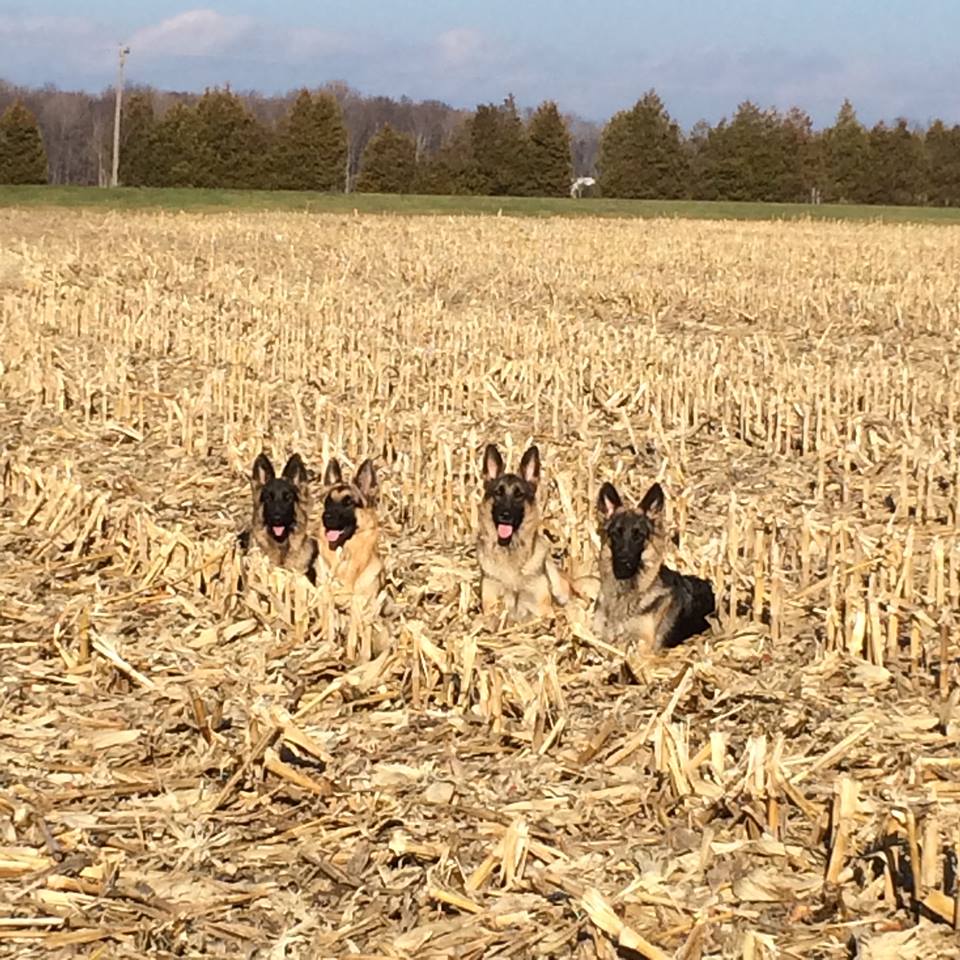Raising a Working Breed Puppy – Frustration Tolerance vs Impulse Control

There is a lot of jargon in the dog training world. Many of them are no more than catch phrases used to attract followers to a single, specific training method. Like any behavior theory, it will work on some dogs, but not others. Before giving up and thinking that your puppy is bad, or out of control, take a few minutes to learn two things that most trainers won’t talk about, and will try to eliminate with punishment, or hide behind rewards.
The first thing you need to understand is that the two terms are not interchangeable.

Frustration Control
Impulse Control
Impulse control is exactly what it says, the ability to control impulses. “I want that. I am going to get that. At all costs.” There is very little cognitive process. It is an impulse. It is the dog’s inability to say ‘no’ and to take responsibility for its own behavior.
No number of tricks, controls, or punishments will fix behavior problems caused by a lack of impulse control. There are two things you need to understand. First, the dog is not disrespecting you. Second, it causes anxiety. Many training methods increase this anxiety. And, anxiety has physical side effects that cause discomfort and even pain.
Frustration Tolerance vs Building Frustration
Being forced to control those impulses out of fear only causes frustration. Forcing a dog to obey ‘or else’ builds Frustration. Does with a high ability to tolerate frustration can appear functional, even when the pressure is building inside. Then one day ‘boom’, your dog explodes in a burst of anger. Dogs with low frustration tolerance ‘take it out’ on other dogs, people, and the furniture. The dog doesn’t understand the feeling, or how to deal with it. We need to help the dog.
How Today’s Training Fails Dogs
Our ‘instant gratification’ doesn’t teach dogs impulse control or frustration tolerance. The dog needs opportunities to learn. The dog needs opportunities to practice. And they need ‘Delayed Gratification.’ This is where things become tricky, because it is not fixed, but variable. A dog’s ability to tolerate one stimuli (ball) may be low, but their ability to tolerate waiting until you come home from work may be high.
You just need to understand that a dog has these skills to varying degrees, and that they can be taught, improved upon, and perfected. The secret is repetition and maintaining a positive learning experience. In short, we need to prevent ourselves from becoming frustrated.
Cognitive Ability (Problem Solving)
The first thing we need to understand is that Frustration Control and Problem Solving are connected. Problem Solving and Confidence are connected. So if we invest the time needed to teach our dogs Frustration Control, we are also teaching them to think before they react.
You cannot micromanage or correct a dog into thinking, or controlling their frustrations, or stopping themselves from wanting something. The dog needs to learn these skills themselves. Give the dog everything he wants and the dog will have no skills. Make Obedience part of the dog’s lifestyle, instead of a 10 minute exercise when you put on the leash, and your dog will build Coping Skills.
The Reactive Dog
What does this mean for reactive dogs? It is the missing key.
To teach a dog impulse control we need exercises where the dog does something we want in exchange for getting something it wants. Withhold something from your puppy. Make it wait before you throw the ball. Hold a treat in your hand and wait until the puppy stops ‘mugging’ you before it receives the treat.
We see frustration tolerance most often with a dog who won’t walk on a leash. You have trained your dog, taught the skills needed to walk well, and perfected heeling at the training hall. But, when you go into public your dog goes crazy.
This is why we ‘stop’ when the dog goes crazy. The dog must learn emotional self-regulation. The easiest way to do this is to ‘stop the motion.’ Dogs love to move. If you make them stop – and don’t give them instant gratification (like having an anticipated treat in your hand) – then your dog is building Frustration Tolerance.
In today’s world no one wants to make their dog stay quietly in the house. The dog runs wild, does what it wants, goes where it wants. Then we put a leash on and want it to suddenly do what we say. This builds frustration. A better method is to have your dog in a down stay several times through the day. Keep the sessions easy and short. Build difficulty slowly. As you increase duration make sure you give the dog a chew or toy so it can release any built up frustration.
Other articles in this series:
- Behavior then obedience: Why I don’t Socialize Pt 2
- Puppy Socialization – You Can Do More Harm Than Good
- What is Puppy Socialization Pt 1
- What is Puppy Socialization
- Raising a Working Breed Puppy – Frustration Tolerance vs Impulse Control
